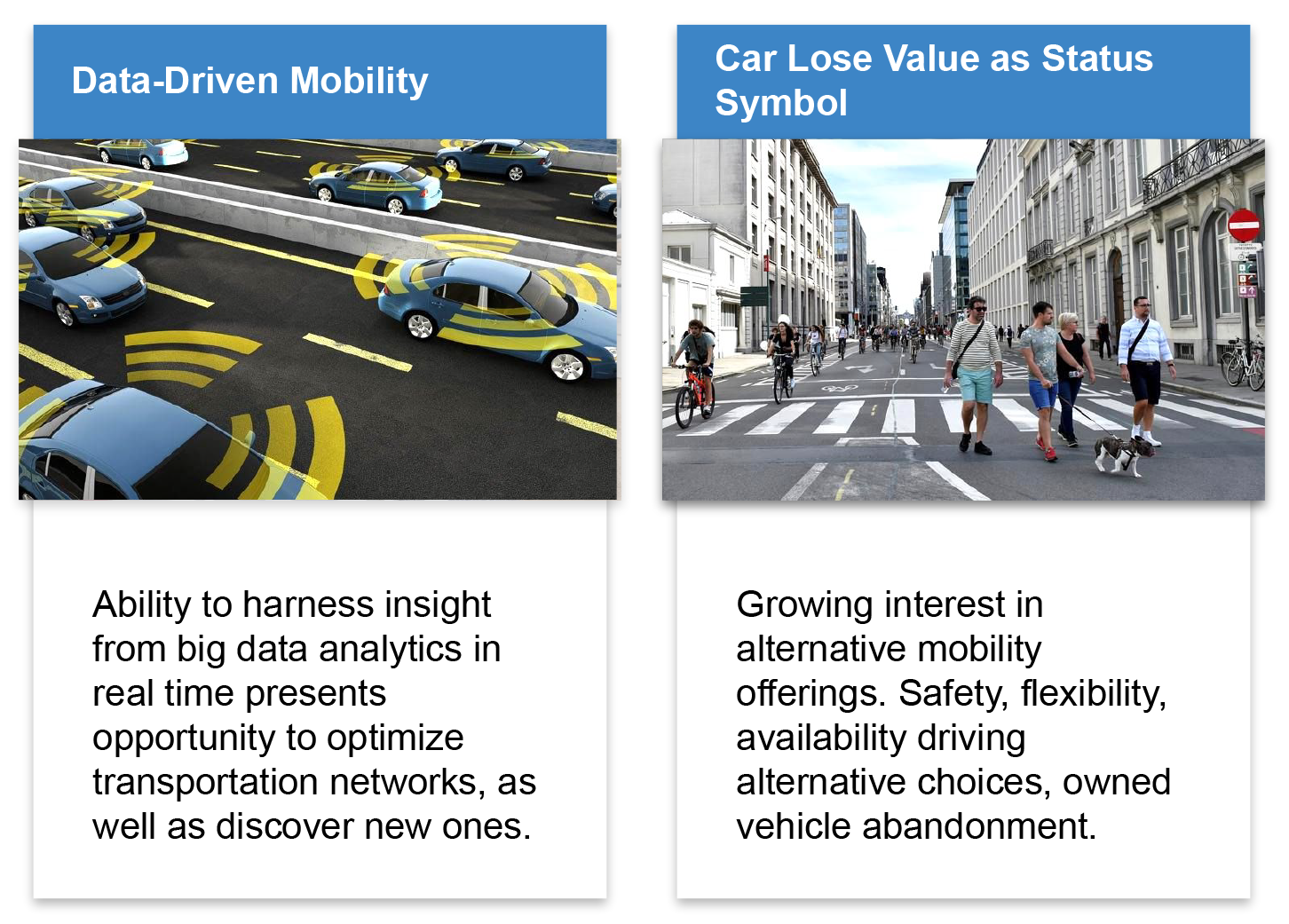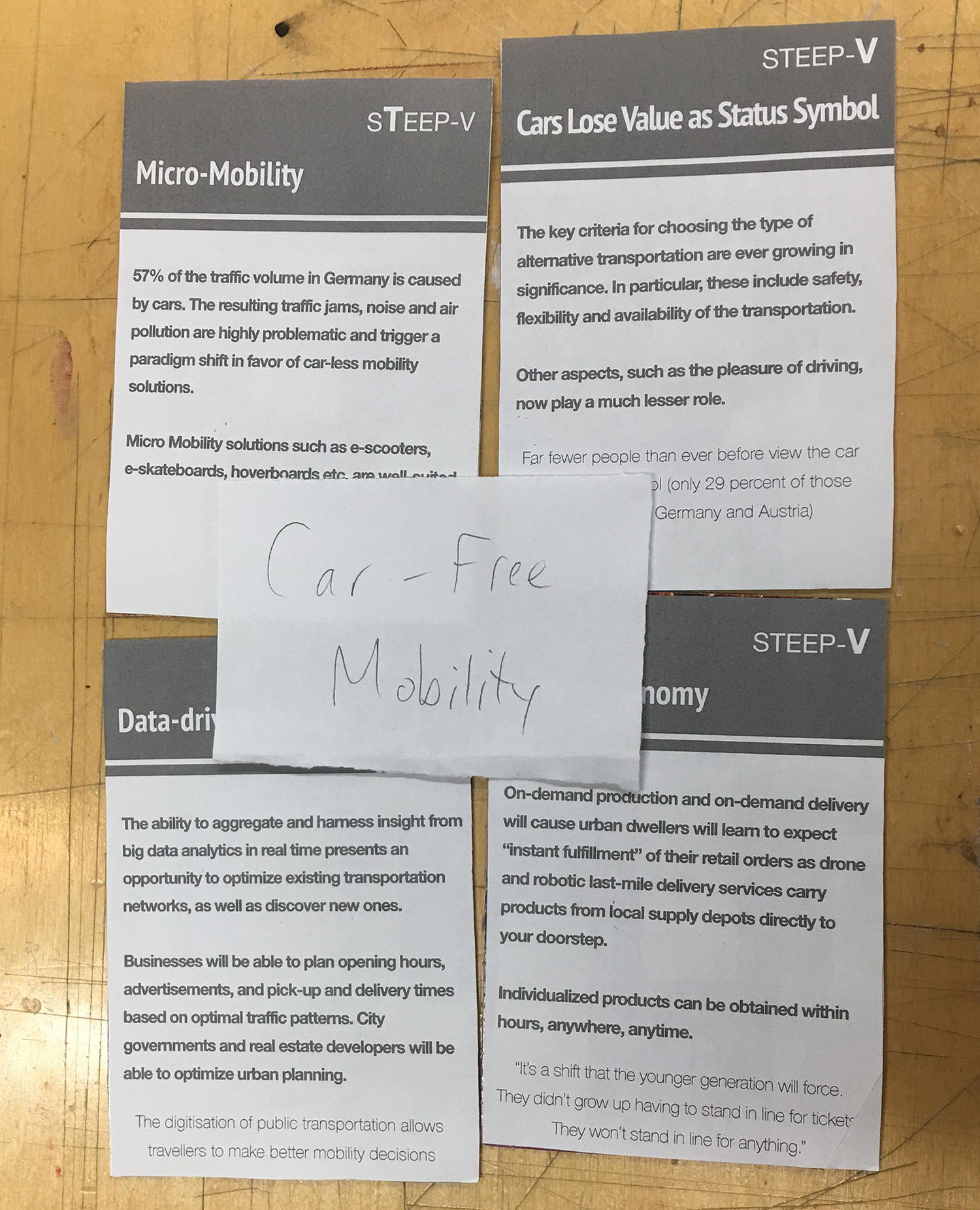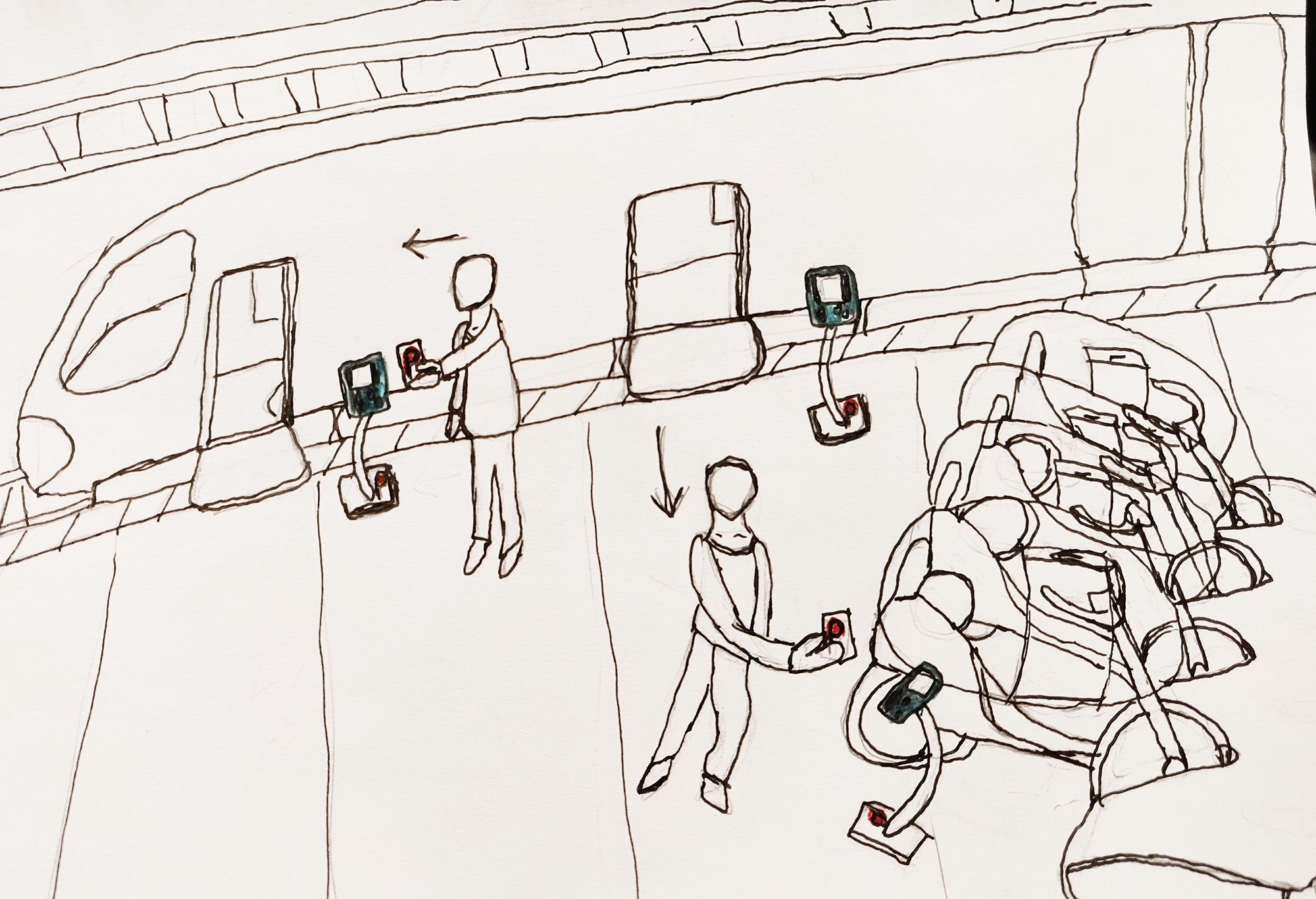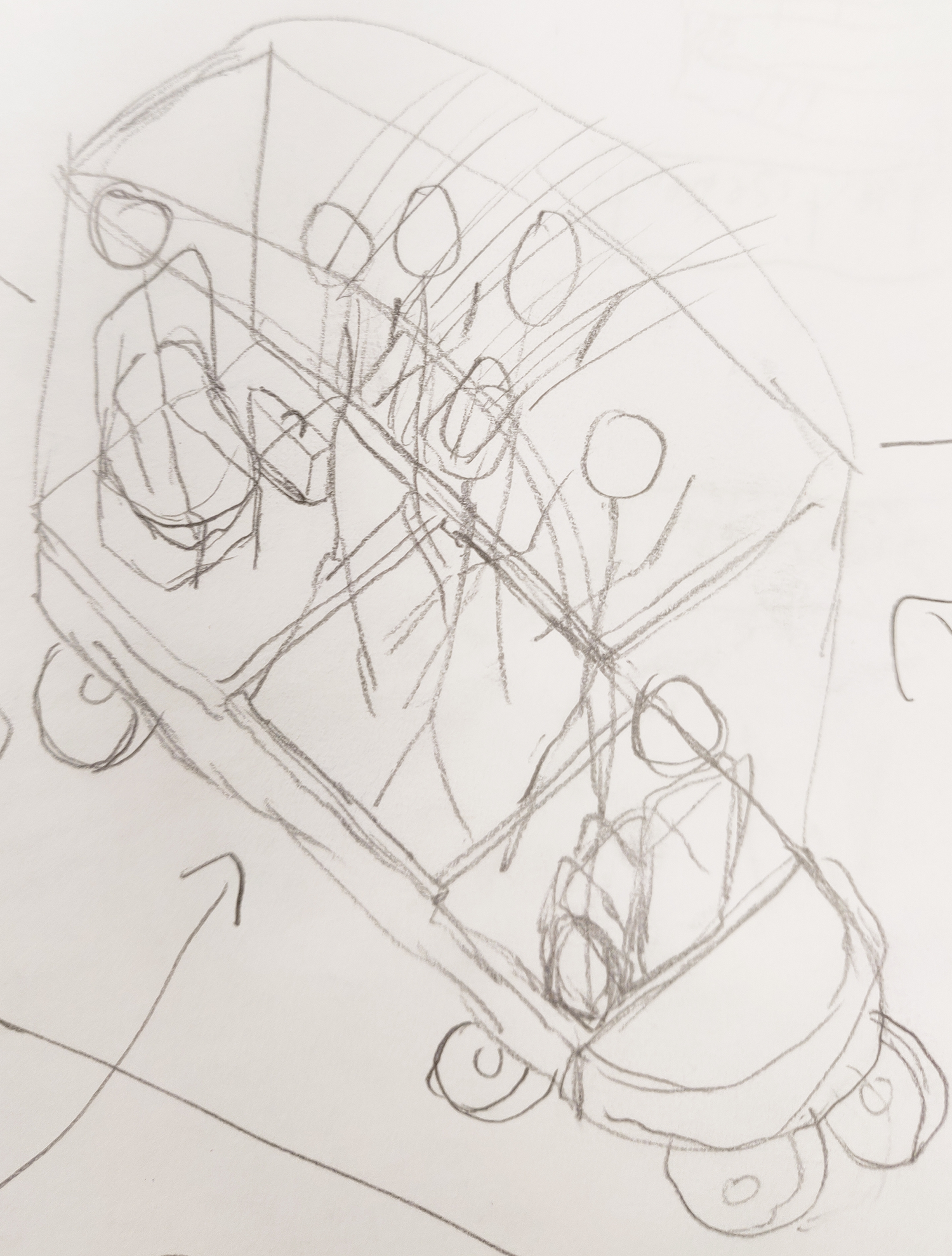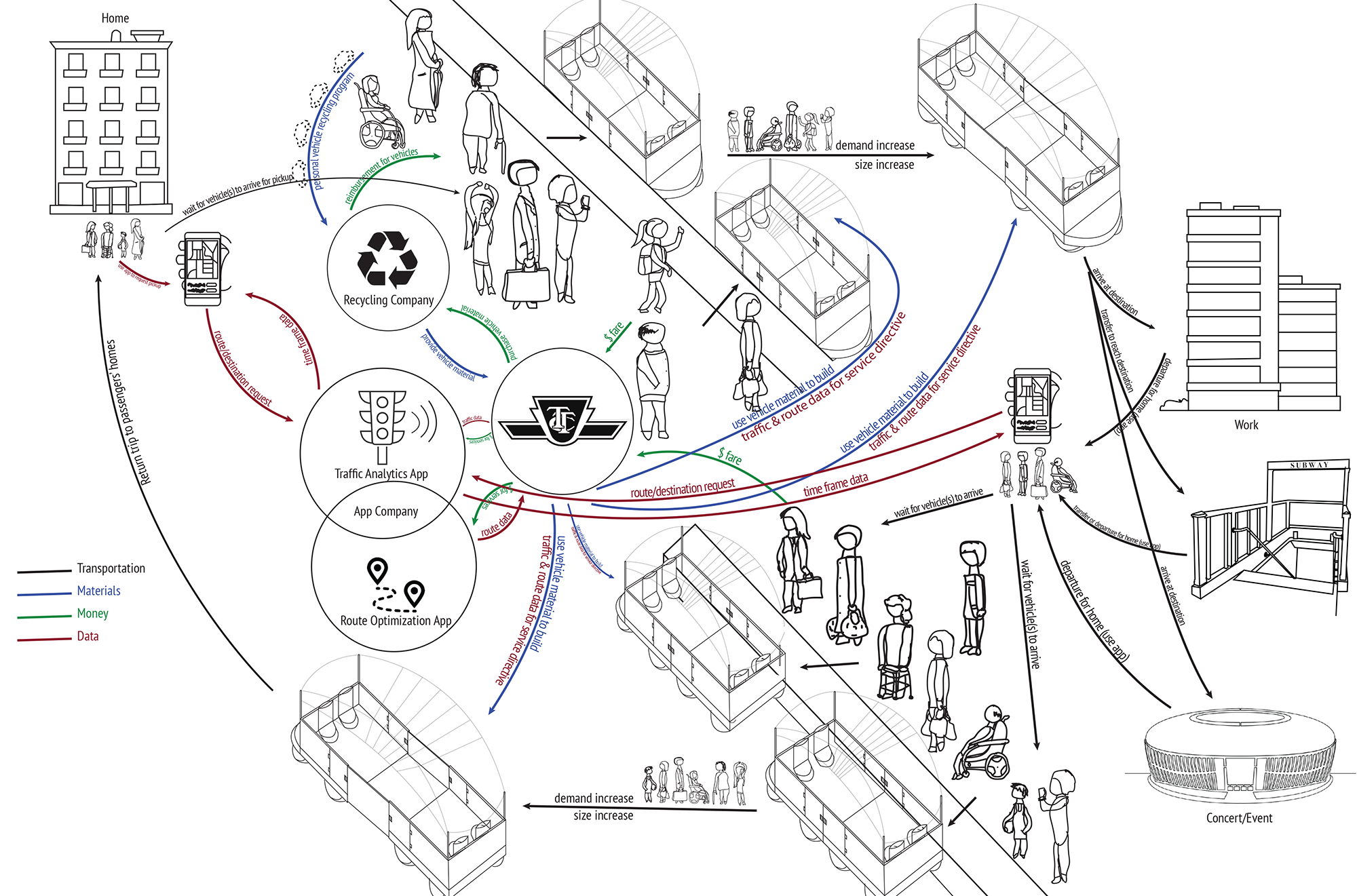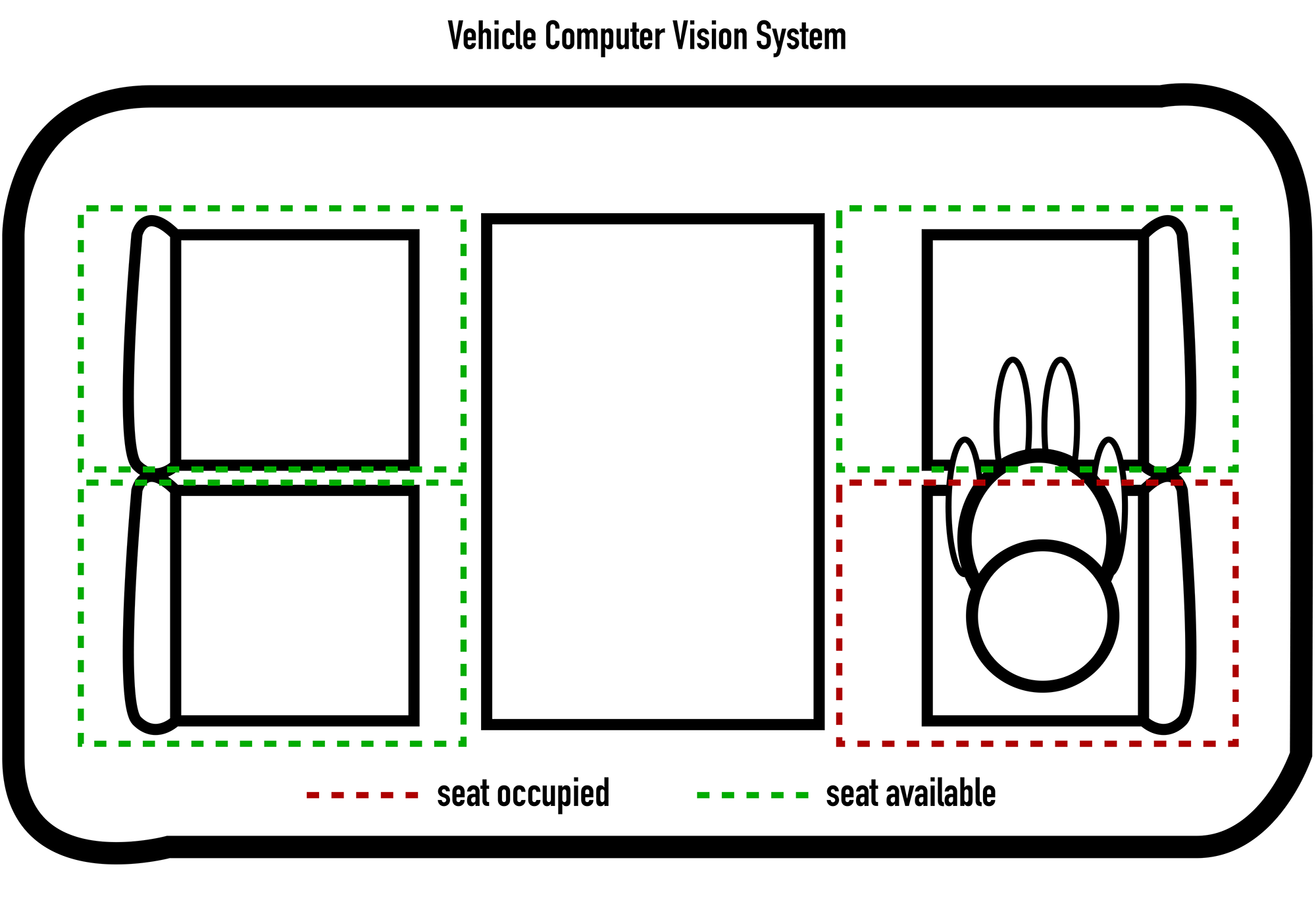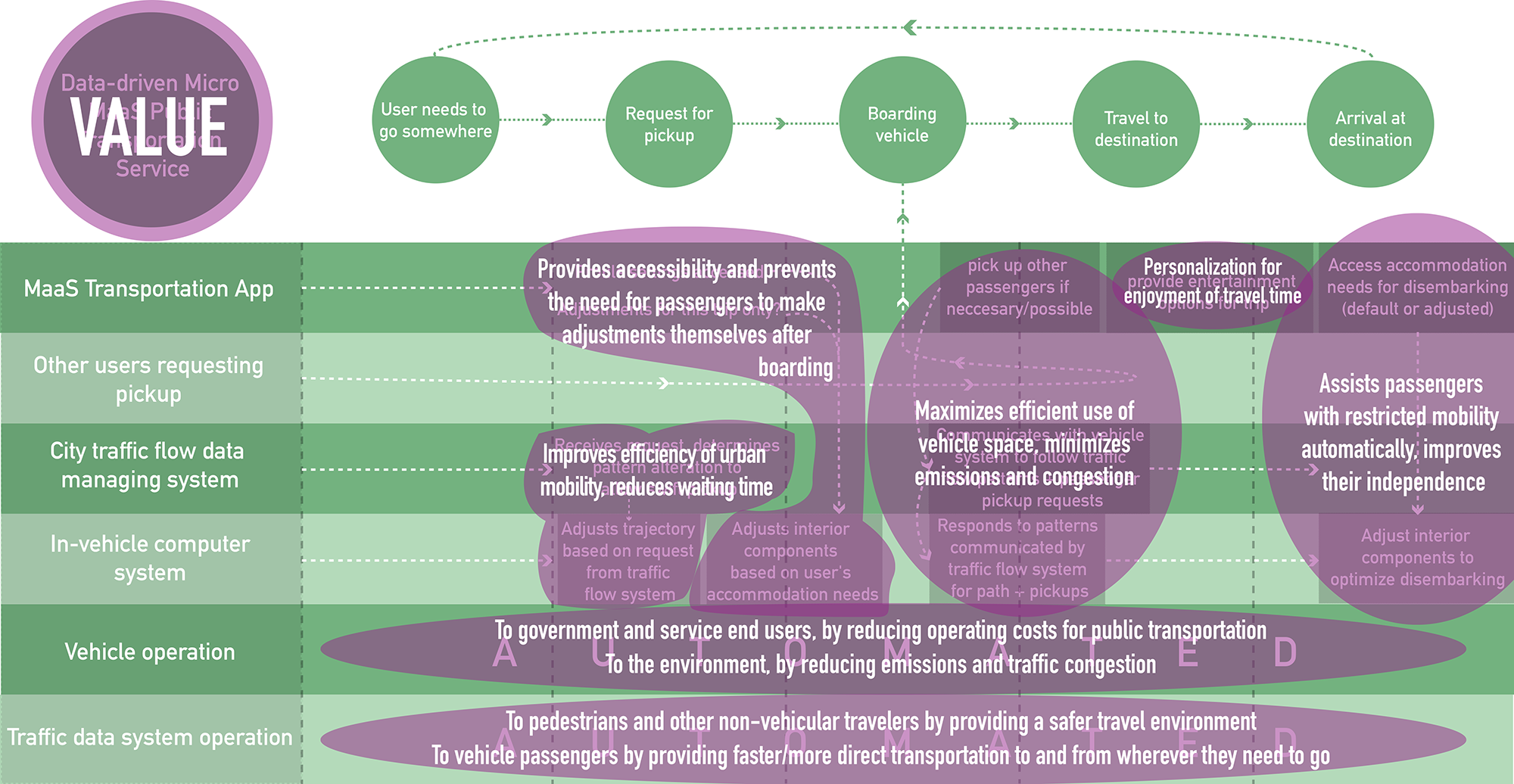Micro-Mobility As A Service
Design Process
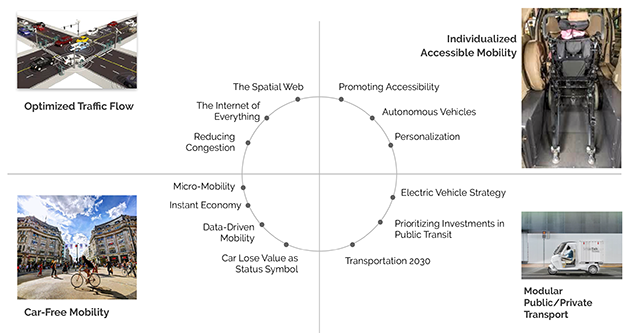
A “STEEP-V” trend analysis means to study social, technological, economic, environmental, political, and changing value-based trends within a subject area. I studied technological and changing value-based urban mobility trends, which included “micro mobility” {use of small scale vehicles to cover the ‘first and last mile’ of a trip), “data-driven mobility (optimization of traffic patterns and flow by making vehicles and city-wide networks seamlessly communicate), ”cars lose value as a status symbol” (trend of people abandoning personal vehicles for more practical and affordable alternatives), and more within the technological and personal values-driven sectors.
After completing the STEEP-V research, I helped collate the trends into themes once we had a full group of six or seven trends from each category. The result was several promising opportunity areas, including “car-free mobility”, “individualized accessible mobility”, and “modular public/private transportation”.
At this point in the project, my group of four formalized one design opportunity area for each of us to work on individually, though with collaboration for feedback and pushing concepts ahead. It was here that I defined the concept of “micro-mobility as a service”: mobility as a service (MaaS) is a well-known concept (the model by which Uber operates), but I envisioned an integrated public transportation network that used micro-scale vehicles such as e-scooters and skateboards to connect people with macro-scale rapid transport (subways, trains). After getting feedback, it was clear that I needed to move beyond a novel systemic use of existing vehicles and look at what micro-mobility could become if advanced to this end.
Once on the train of thought of re-envisioning what micro-mobility could be, I began sketching vehicle concepts designed to optimize road space even more than individual vehicles scooters would if adopted en masse. By introducing modularity to its interior components and
expandability, I was aiming to make the difference in vehicles in use during peak and off-peak hours as minimal as possible, while still allowing the service to be on-demand, and able to intelligently pick up passengers from where they are, instead of from pre-defined hubs. This form and functionality allowed the system to take shape.
expandability, I was aiming to make the difference in vehicles in use during peak and off-peak hours as minimal as possible, while still allowing the service to be on-demand, and able to intelligently pick up passengers from where they are, instead of from pre-defined hubs. This form and functionality allowed the system to take shape.
With a more innovative concept now developed, I completed a detailed system map, showing the flows of people in transit, data, money and materials through notable city institutions, the Toronto Transit Commission services, data managing software and recycling plants. The service would see slower transit options like buses replaced with a large fleet of autonomous vehicles that use the MaaS model and expand and contract in response to demand, in order to maximize the efficiency of road space usage and minimize congestion, while improving the accessibility of the urban mobility service.
To develop further on the system map, the project turned towards identifying leverage points (aspects of existing systems in which the greatest positive effects occur as a result of minimal changes) and how the new system generates value. This was to be illustrated via storyboards showcasing scenarios that demonstrate value generated from several different user perspectives. I built two scenarios that helped add vital value-generating details, such as making the interior of the vehicles configurable for accommodations, having the configurations occur prior to pickup by leveraging a user-maintained transport needs profile, as well as using a computer vision system to track when seats are actually available to maintain the efficiency of space usage on board.
By the end of my design process for my product-service-system concept, I had developed a user journey map and used it to overlay values generated at each level of the journey. I also added a third scenario that focused on a maintenance journey and included some detail on how the concept would serve the circular economy needs, by having repair service outlets be equipped to do in-house repair and recycling of materials.
Results
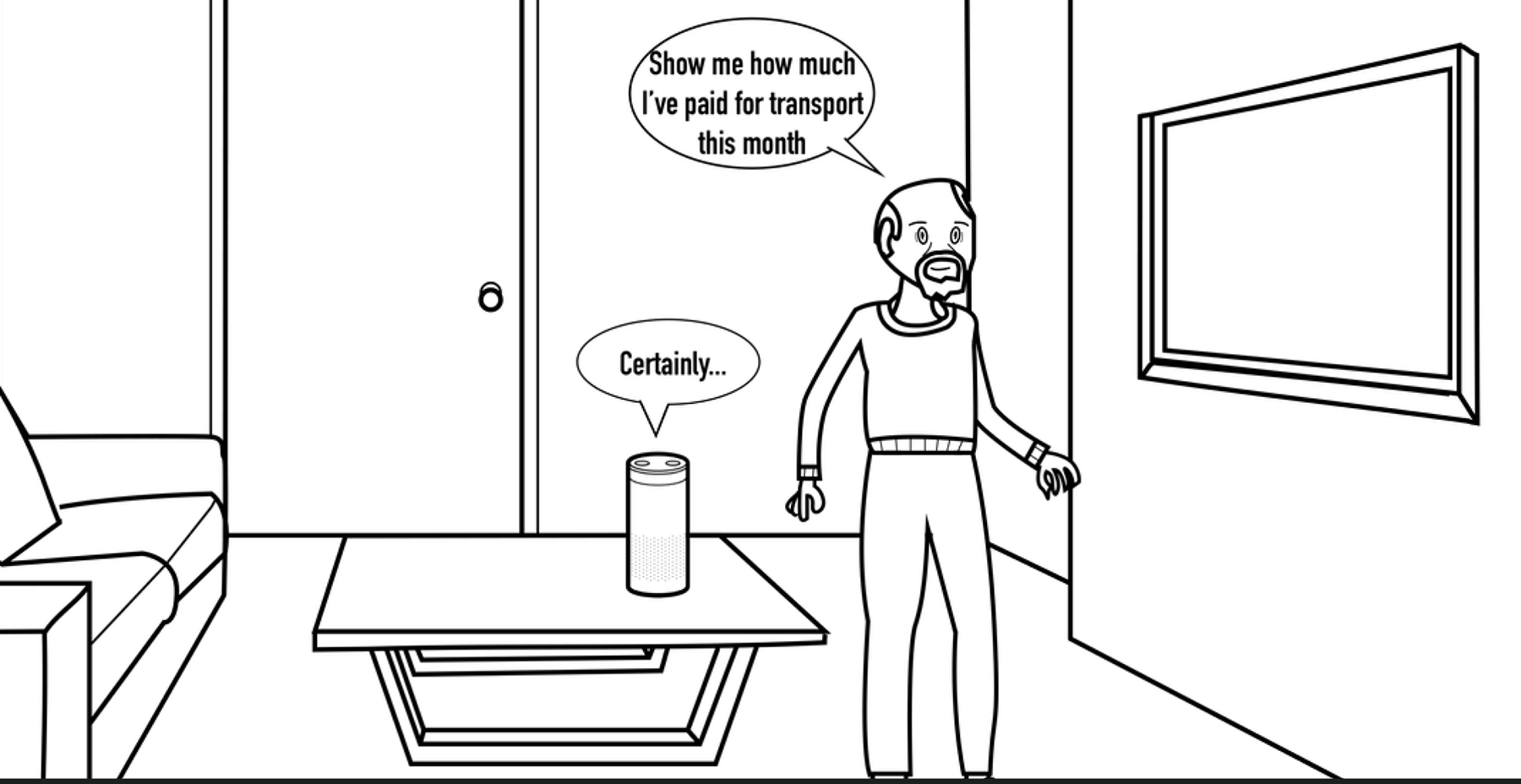
- OCAD University: Bachelor of Design (Industrial Design)
- January-March 2020

